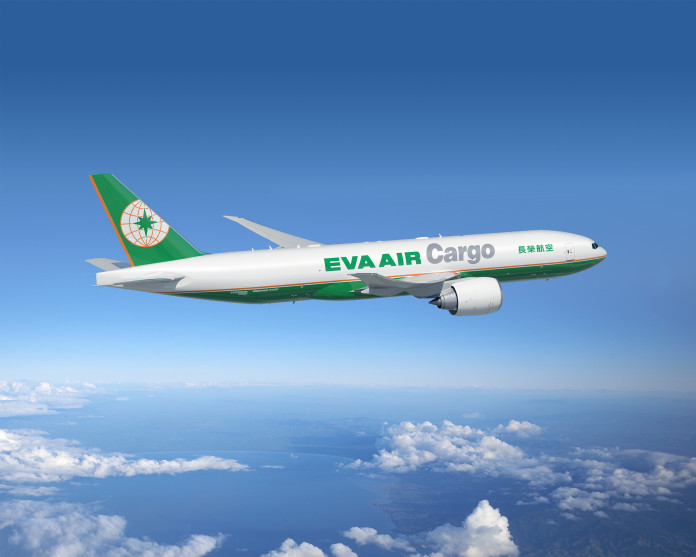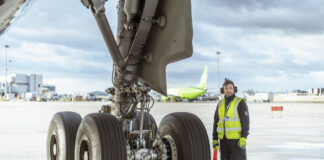

Boeing’s order from EVA Air Cargo for five of its Boeing 777 Freighters, confirmed in July, would seem to point to an airfreight market confident of its future and expecting to meet the positive expectations outlined by the likes of the US aircraft maker in its industry predictions, but is it a true reflection?
At the Paris Air Show in June, Boeing published its 20 year forecast and announced an order of 20 Boeing 747-8 Freighters for Volga-Dnepr Group’s AirBridgeCargo Airlines, as well as nine more freighters split between Qatar Airways and EVA Air – the order later confirmed in July. The Boeing forecast, its current market outlook 2015-2034, predicts a need for 920 production freighters over that period.
This is higher than the 800 it predicted at the Farnborough Air Show in July last year with a current market outlook stretching out from 2014 to 2031. That saw a reduction from the Boeing World Air Cargo Forecast, which was last published in 2013 and had predicted 5.2 per cent freight tonne kilometre (FTK) growth over the next 20 years. The July forecast also cut the FTK prediction to four per cent. But, this year’s outlook sees cargo traffic growing at about 4.7 per cent per year.
This is more conservative than the International Air Transport Association (IATA) analysis for this year. In the same month as this year’s Paris Air Show, IATA published its mid-year report about the state of the airline industry, including airfreight. Forecast to grow 5.5 per cent this year, airfreight yields are expected to fall by about seven per cent as capacity increases by 6.2 per cent, a rise of 0.8 percentage points against last year, says IATA. The forecast was announced on 8 June at IATA’s 71st annual general meeting and world air transport summit in Miami. IATA published its first mid-year report.
The mid-year report foresees the 5.5 per cent growth leading to 54.2 million tonnes being transported in 2015. Despite the expected tonnage increase, the cargo related revenue is going to be $62 billion for 2015, one billion dollars less than 2014. The revenue stagnation reflects those squeezed yields.
The Airports Council International (ACI) quarterly report for January to March 2015, published in May, gave more conservative figures for airfreight. It said, this year has seen total airfreight volumes grow by 4.4 per cent from January to April, compared to the same period last year, according to ACI. The association says a slowed growth in April came after an upsurge in February, due to the timing of the Chinese new year celebrations, and the modal shift from sea freight to aviation resulting from congestion at West coast US sea ports – which has since ended. Of that 4.4 per cent for the total airfreight, domestic was lower and international was higher, with a substantial increase of more than 12 per cent in February.
Such double digit growth would seem to indicate good revenues, but as the IATA data shows, revenue will probably be lower this year than last. Freight, rates and the inclusion of what had been fuel surcharges, has been hotly debated for many months and in IATA’s report it shows that at slightly more than $2 per kilogramme the market’s rates are 66 per cent less than they were in 1994. In 2014, IATA estimates that yields shrank two per cent. It is because capacity continues to grow as bellyhold space is added to the market with the expansion in passenger services, which has been averaging six per cent per year for the last five years. With this average of six per cent growth, the freight load factor is expected to remain at a weak 47.4 per cent this year.
IATA says: “The longer term prospects for air cargo remain challenging with a continuing post-financial crisis trend of slower trade growth relative to [gross domestic product].”
With such market analyses and forecasts, the freighter orders seen in June would not seem to be representative of the potential future demand for new aircraft. In contrast to Boeing’s 29 freighter orders in June, Airbus has not sold a single one of it Airbus A330-200 Freighters in 2015, so far, and did not sell one in 2014 either. It did deliver one aircraft. Like Boeing, Airbus’ own market forecast, the Global Market Forecast 2015-2034, published at the Paris Air Show this year, predicts 1,054 more freighters, a rise in the fleet from 1,633 today to 2,687 in 20 years time, with 804 new freighter deliveries. This is a reduction from Airbus’ first publication of the Global Market Forecast in 2013 when it predicted that 871 freighters will have to be built by 2032. Airbus’ confidence in freighter sales maybe reflected in its announcements about new aircraft programmes over the last 18 months. Airbus’ freighter, the A330-200F, is now one of seven different types of A330 that the European aircraft maker has.
In 2014, Airbus announced its Airbus A330 Regional, the Airbus A330-800 new engine option (neo) and Airbus A330-900neo, but no new freighter. In 2012, Airbus, its then conversion company, Elbe FlugzeugWerke, and Singapore-based ST Aerospace, agreed to work on the A330 Passenger to Freighter (P2F) programme. In 2014, the A330P2F launch customer, Egypt Air Cargo, was revealed. The other products being the original bellyhold only, Airbus A330-200 and Airbus A330-300.
At the Farnborough International Air Show in 2014, Airbus’ chief operating officer for customers, John Leahy, told Air Cargo Week that there is no plan for an A330-200Fneo. At the Paris Air Show this year, Airbus launched its A320 family P2F programme. According to its freighter order and delivery data, Airbus has 10 A330 production freighters left to deliver. Is Airbus ever going to deliver another or it is going to purely offer converted freighters, either A330s or A320s?
While Airbus and Boeing predict thousands of freighters, their forecasts for bellyhold aircraft dwarf the airfreight sector. Ninety per cent of freight can go in the bellyhold. Twenty years from now, Boeing foresees a world fleet growing by about 20,000 to more than 40,000 aircraft – while freighter growth is no more than 1,000. Twenty years from now its probable the worldwide airline network will make it less likely a freighter will be needed to go to a certain airport, because there will be suffcient bellyhold capacity going already. With squeezed yields, a vast bellyhold network, who needs a freighter?













